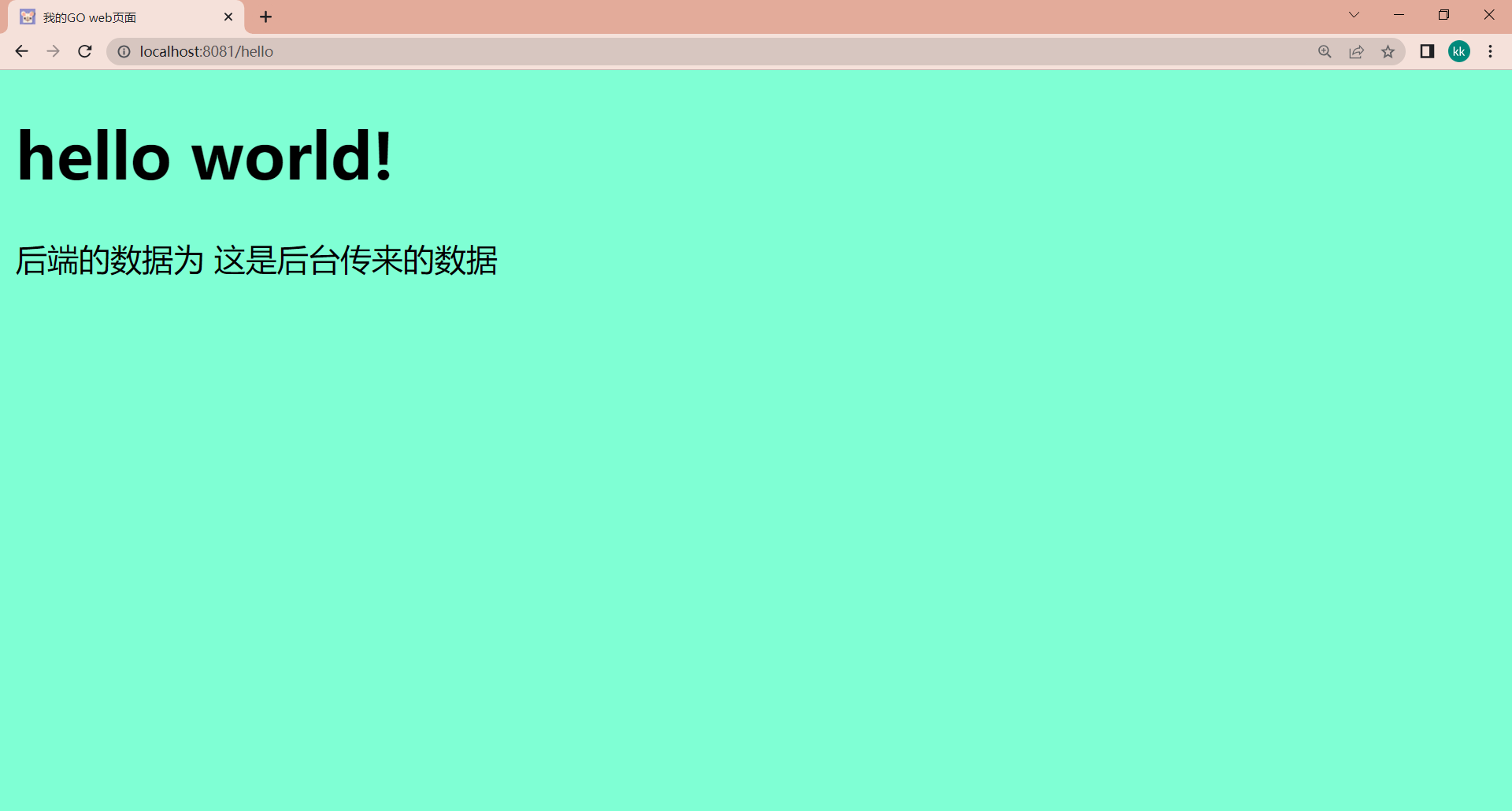4、响应页面
首先创建 template 文件夹将需要的 hmtl 文件放在里面,然后编写 hmtl
<!DOCTYPE html>
<html lang="en">
<head>
<meta charset="UTF-8">
<title>我的GO web页面</title>
<link rel="stylesheet" href="/static/css/style.css">
<script src="/static/js/commom.js"></script>
</head>
<body>
<h1>hello world!</h1>
后端的数据为
{{.msg}}
</body>
</html>设置标题为 “我的 GO web 页面”,输出为 "hello world",并且接收后端数据(只会编写)
然后同样的,先创建一个服务,并设置一个服务器接口
//创建一个服务
ginServer := gin.Default()
ginServer.Use(favicon.New("./aevr4-fg4ao-001.ico"))
//服务器端口
ginServer.Run(":8081")然后就可以在中间设置我们的服务了,先是加载静态页面
//加载静态页面
ginServer.LoadHTMLGlob("templates/*")接着利用 Gin 的 Restful 获取后端数据并输出
//Gin Restful
ginServer.GET("/hello", func(context *gin.Context) {
//context.JSON(200, gin.H{"msg": "hello,world"})返回JSON数据
context.HTML(http.StatusOK, "index.html", gin.H{
"msg": "这是后台传来的数据",
})
})这样一个基本的页面响应就做好了,如果要想美化一下页面可以设置 static 文件夹放入 css 和 js 文件进行美化这里的 css 和 js 分别写为
body{
background: aquamarine;
}alert(1)并在 main 文件中进行相关设置
//加载资源文件
ginServer.Static("/static", "./static")以上合起来就可以完成一个完整的页面响应了
package main
import (
"github.com/gin-gonic/gin"
"github.com/thinkerou/favicon"
"net/http"
)
func main() {
//创建一个服务
ginServer := gin.Default()
ginServer.Use(favicon.New("./aevr4-fg4ao-001.ico"))
//加载静态页面
ginServer.LoadHTMLGlob("templates/*")
//加载资源文件
ginServer.Static("/static", "./static")
//Gin Restful
ginServer.GET("/hello", func(context *gin.Context) {
//context.JSON(200, gin.H{"msg": "hello,world"})返回JSON数据
context.HTML(http.StatusOK, "index.html", gin.H{
"msg": "这是后台传来的数据",
})
})
//响应一个页面给前端
//服务器端口
ginServer.Run(":8081")
}
